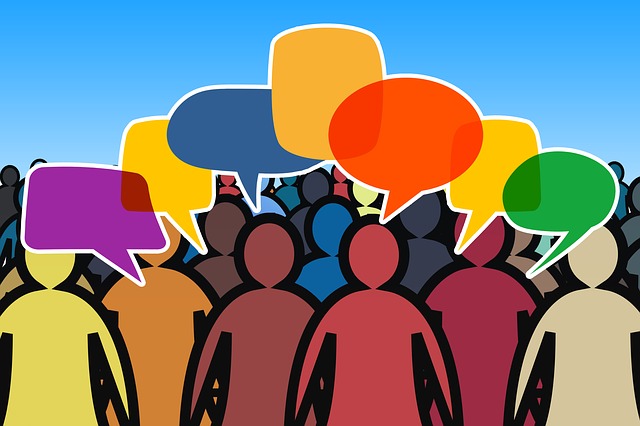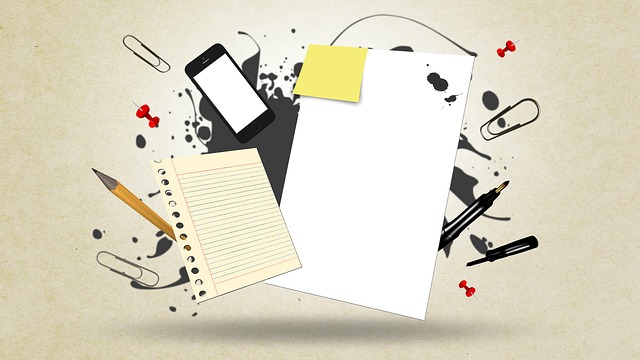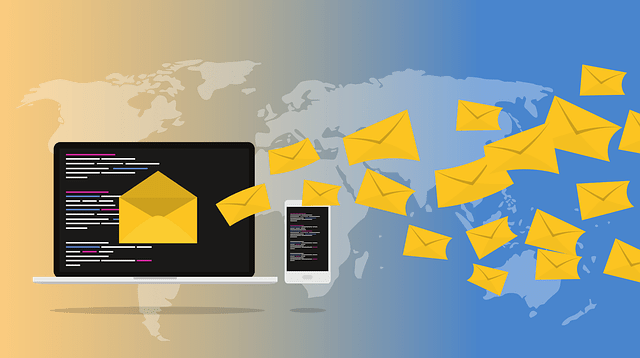by Alicia S. | Jan 6, 2020 | Goals, Monthly Discussions
As with each and every new year it brings about goals and ambitions. Whether they be new or old… including SMART goals.
That my friend is what you and I will discuss today and for the rest of this month.
Last year was a wee bit too ambitious to do a blog post… every. single. day.
* heavy sigh and eye roll *
So, this year… this blog (myself along with my fellow amigos) will have a brand spanking new post up every Monday.
W00t! New stuff to read!! Yay, yay, yay!
If I’m excited then I know that you are 😀 … right?
Now let’s discuss goals.
What are Goals?
A goal simply put is a dream with tasks / steps needed to obtain it.
A goal has a timeline.
SUPER DUPER SIMPLE… but…
I’m one of those that cringes when I’m asked to make goals. Especially SMART goals.
Sure I can dream all day long yet when it comes to putting it into action I am known to drag my feet.
What are SMART goals?
Glad you asked.
SMART goals stand for…
- Specific (simple, sensible, significant).
- Measurable (meaningful, motivating).
- Achievable (agreed, attainable).
- Relevant (reasonable, realistic and resourced, results-based).
- Time bound (time-based, time limited, time/cost limited, timely, time-sensitive)
SMART goal definition swiped from MindTools
They have tons of excellent articles on goals and other tips on managing your career.
Back to SMART goals
You could read the article on SMART goals by MindTools OR I can give you the abbreviated version.
As you know the first part of making your goals SMART is to be SPECIFIC.
Yeah you can see how a creative type like me would cringe on something like that. It stops me dead in my tracks.
Though there are some friends to help you along and you know it as the five W’s…
Yup, that’s right — what, why, who, where and which
The first part of being specific is asking what do you want to accomplish then follow it up with why is it so darn important to you.
Third is to ask who is involved — like do you need your family members and friends to respect the time you’ve set aside to ‘X’ so that you can meet your goal?
Forth is where is it happening? Is it online, in a physical location or where are you going to do this goal or where does it need to happen?
Finally ask which resources or limits are involved with this goal. <- This is a VITAL question. Because resource COULD mean money that is needed to make the goal a reality. DO NOT SKIP THIS QUESTION
Next part of SMART goals is to ask if it is MEASURABLE
How much, how many and how do you know when you’ve met the goal.
Lots of people make measurable goals such as ‘I will lose 5lbs by April.’
They will know if they made that goal when they’ve lost 5 pounds AND it’s before April. Just in time for the beach season in the Northern Hemisphere 😀
Third part of SMART is ACHIEVABLE
You should think long and hard on this one for it once again should include questions about finances (if the goal involves moo-lah)
Also you need to ask how you’re going to accomplish this goal. Remember to break it up in to tiny steps if seems too big.
Smaller steps = a much more attainable / achievable goal
Now we’re on the RELEVANT portion of SMART goals
Your goal will be relevant if you can answer “yes” to the following:
- Is it worthwhile?
- Is the timing right?
- Does this match my effort / needs?
- Is this goal right for me?
- Is it applicable to here-and-now?
Last but not least the final portion of SMART goals is TIME-BOUND
You need to set when you think you’ll finish your goal. Ask yourself if you can do it six months from now or six weeks or even today.
Be real and keep your daily obligations in mind when charting out the timeline for your goal.
Yeesh, I still cringe even after writing all of it. Though we all need to eat our veggies if it will do us more good.
So, I am giving you a challenge…
Come up with at least one SMART goal and let me know about.
You can keep me accountable for the Monday posts and I can help keep you in line with your goal.
Deal?

by Alicia S. | Oct 8, 2019 | Daily Discussions, Monthly Discussions, Newsletters |
What in the world does audience & genre have to do with newsletters?
A lot. Trust me. They are more intertwined than you know.
Most seasoned newsletter veterans know that your audience and genre are key to delivering a successful newsletter.
Don’t believe me? Then ask around.
The ones that know what the heck they’re doing can pretty much have their fans eating out of their hands.
Pretty powerful stuff, eh?
Though to be honest, not all newsletters key in on these crucial pieces. They are missing either the genre or they are speaking to the masses instead of their intended individual.
Okay down to business…
What does genre have to do with your newsletter?
It determines the mood, theme or what you will be talking about in your letters to your adoring fans.
If you write paranormal horror then there is no way in heck that you would be writing about Peter Rabbit in the next letter… not unless Peter had an unfortunate event. Only if the subject relates to the genre that YOU write should it be included in your newsletter.
So if you write coming of age youth stories then you would write about youth related news that involves coming of age topics. You would include promotions for youth coming of age books — like Harry Potter, Artemis Fowl or Percy Jackson.
Genre will determine what giveaways or promos you could give away to your fans. Romance might be candles or youth might call for some cute kid thing-a-ma-bob you could send your fans. Remember your genre is key to keeping your audience ensnared in your news and craving for more.
What about audience? How does that play into your newsletters?
Did you do the exercise from part 2?
If not then here it is…
Write down the one person that you are writing your story for (they can be fictitious if you want them to be):
- What is his/her name?
- Age?
- Likes and/or dis-likes?
- Do they like reading?
- What is the one quality that makes them stand out?
You need to know who you are writing for… down to the last freckle on their nose.
You are writing for that person and that person alone. Not Bo-Jim and not Sally-Ann.
No.
If you chose to write to Billy down the street or little Suzy then that is who you are writing to and only them.
Do not…
under any circumstance…
write your letters…
as though you are…
addressing a huge crowd.
No.
That is not how you do them.
Each letter is meant to be a one-on-one letter. You need to write them as though you are talking to Billy sitting across the table from you. Billy wouldn’t like it if you were talking to him through a megaphone and to the entire cafe.
He will probably get up and leave if you do that. So, don’t do it.
Please for the love of G, don’t do it.
One more thing… keep it conversational.
Alright let’s wrap things up.
As you have read by now you should know that a successful newsletter has two things nailed down:
- Genre – What you write
- Audience – Who you are writing for
Once you have those two things figured out then you’re at least 5% better than the average newsletter that is out there.
If you have any questions then please do not hesitate to ask in the comments. We’re always happy to answer for we’re all in this together.
Thank you for reading Burning Embers’ Newsletters for Beginners Part 3 – Audience & Genre.
Next post will be Newsletters for Beginners Part 4 – Fellow Author Newsletters
Missed Part 2? Go ahead and catch up on Newsletters for Beginners Part 2

by Alicia S. | Oct 7, 2019 | Daily Discussions, Monthly Discussions, Newsletters |
How do you do preparation for newsletters?
Is it easy to prep?
Can anyone do this preparation?
Newsletters are not hard… well that is if you do preparation for them.
Would you believe me that all that huff and fluff about newsletters being hard is a bunch of bull hockey?
You see everyone who has complained about newsletters being hard are part of the “reactive” boat. They plan little or just do one when the feeling strikes them. Then they moan and groan about how it’s difficult to keep a regular cadence.
This is especially true for us procrastinators.
They put off planning in hopes it will go away. But that’s the worst thing that they can do when it comes to newsletters. For a well working newsletter is a well thought out plan done via preparation.
Without preparation we cannot plan. Without a plan means a inconsistent scheduled newsletter. It is through research that allows us to prep and then plan our newsletter to make it easy on ourselves.
When you start planning then you have transitioned over to the “proactive” boat. Which by the way is the boat with the most fun because it doesn’t have all the chaos happening on the other ship. No one likes the hair pulling nonsense that is happening over on the “reactive” boat.
So, how does one prepare for a newsletter?
If you guessed the first step is research then you get a gold star.
Yeah I know… I kind of hinted at that already. I reckon you’ll guess the next step is plan. However, let’s focus on the type of research one will need to do before you can start planning.
In my own experience research to me when it comes to newsletters is:
- Target Audience – Youth? YA? New Adult? Naughty?
- Genre – Fantasy? Romance? Sci-Fi?
- Fellow Author Newsletters – what are they doing?
- Newsletter Cadence – how often do you send it out?
- Time – do you have it?
Target Audience & Genre
If you’ve already written your book then you have your target audience and genre nailed down… I hope. You did do that right? If not then no worries we’ll cover that in the next few posts.
Fellow Author Newsletters
The next part is to subscribe to a few fellow author’s newsletters to see how they’re doing it. You’ll want to take a look at the layout, what they write and how often they offer goodies to their subscribers.
Once you have an idea of what you liked and didn’t like from those newsletters go ahead and write down your rules (and your reasons why). You know the ones that state what you will and will not do for your newsletter. Seriously, write it down. It’ll help jog your memory as to why you’re doing or not doing something later on down the road.
Cadence
Then move on to your desired cadence — aka your newsletter schedule. Each genre is different and sometimes you’ll need to tweak your schedule to hit that sweet spot. Though, I will say that most fans will get annoyed if you decide to send them an email every day.
Don’t say I didn’t warn you because you will see your subscriber numbers drop dramatically if you try to email them daily. Not to mention it will raise the likelihood of your newsletter being marked as SPAM. * * shudder * * nobody wants that… not even MY enemies (not like I have enemies… <.<”)
Time
Finally, you need determine how much time you have to dedicate to your newsletter. You have to factor in all your author-y duties, family commitments, work (if you still work) and other life stuff.
It would not be reasonable to say that you can do a weekly newsletter if you got tons of other stuff going on in your life. Weekly schedules can be done… I’ve seen it.
Such as a Mom of four that chauffeurs them to practice after she gets home from work, grocery shops, does chores and makes dinner. On top of that still plans out her weekly newsletters, gets the current scheduled and ready to go out the door.
It’s all about planning.
To start I recommend doing at the most a bi-weekly newsletter to get your toes wet then eventually increasing it to the bi-weekly to weekly newsletter. I must warn you that before you change up the schedule you have to let your subscribers know.
Any change to the newsletter cadence is definitely news worthy. You can always mention it in the previous newsletter before the new schedule goes into effect.
Conclusion
So, in essence preparation for a newsletter is research and planning. Once you have done your research then you are ready to start planning.
You have your cadence, genre, audience, format and allotted time figured out. Now is the moment to start puzzling these pieces together. Like what does one write in a newsletter?
There are tons of things that you can put in there. It can be genre related news, swaps, latest story that you’re working on or perhaps it could contain a new freebie for your adoring fans. Any of those things work because it’s your newsletter.
Yet, we’ll cover what to put in the newsletter a bit more in depth later on.
Before I go there’s a bit of homework for you to do to help figure out your audience or to get a better idea of your target audience…
Write down the one person that you are writing your story for (they can be fictitious if you want them to be):
- What is his/her name?
- Age?
- Likes and/or dis-likes?
- Do they like reading?
- What is the one quality that makes them stand out?
If you have any questions then please do not hesitate to ask in the comments. We’re always happy to answer for we’re all in this together.
Thank you for reading Burning Embers’ Newsletters for Beginners Part 2 – Preparation.
Next post will be Newsletters for Beginners Part 3 – Audience & Genre
Missed Part 1? Go ahead and catch up on Newsletters for Beginners Part 1

by Alicia S. | Oct 4, 2019 | Daily Discussions, Monthly Discussions, Newsletters |
Just starting out with newsletters??
No worries. We’ve got your back.
There is tons of information out there on newsletters…
Are you scratching your head and asking…
“What are newsletters? Why do I need them? And how can they benefit me?”
Then you’re in the right place. I was in the same boat as you are now about a year ago. Though I won’t call myself the total expert.
However, I can lend you my thoughts and knowledge on what I’ve learned about newsletters.
Follow along this month as Burning Embers guides you through the vast amounts of information there is on newsletters and clarifies what you truly need to know and what you can kick to the curb.
So, what are newsletters?
Have you ever subscribed to something and received an email from that store or person like once a month, bi-weekly or even weekly?
That’s a newsletter.
Usually it has updates from the person or shop letting you know what’s going on and if there’s any cool sales or goodies that you can purchase.
Some newsletters have freebie offers. Tons of people love these. In fact that is how most people get subscribed to newsletters through the lure of a free item.
We’ll go deeper into freebies / lead magnets later this month. For now just know that this is how most people end up subscribed to newsletters.
But basically a newsletter is an update in the form of an email sent to a list of people who subscribed to your list. Newsletters are sent out on either a weekly, bi-weekly, monthly or even quarterly basis. It is rare for a newsletter to not follow a schedule. Subscribers don’t like newsletters that are sent whenever.
We’ll cover schedules and what you can do to determine your newsletter cadence for your audience later on this series.
Let’s move on to why you need your own newsletter.
What’s the real reason as to why would you need to do your own newsletter?
If you’re like me then you’re probably a wee bit of an introvert. You cringe at needing to communicate with the outside world. So, the idea of a newsletter makes your heart race and your palms sweat.
Yeah. I totally understand. Really. I do.
However, you still need your own newsletter.
If you’re serious about being an author and cultivating your own fan base then you need a newsletter.
I hear ya back there screaming “But what about social media? Can’t I reach my fans there?”
No, social media should not be the solution. In fact you’re more likely to waste your time there growing an audience only to have the social media giants pull the rug out from under you. I will say that social media is good for meeting people but that’s it.
Social media is a distraction. You should do your best to direct your friends and acquaintances to your website or little spot that is off of social media. Then grow your fandom there. Trust me. Because the social media giants are only big for so long before they become yesterday’s frail has been.
Back to the reason why you need a newsletter.
Newsletters offer you the opportunity to talk to your audience on a one-on-one basis. Emails are personal. Seriously, they are. Go take a look at the last email you’ve received. If the person did it right then you felt like they were talking to you… not a whole group. That’s pretty special.
Newsletters let your audience feel more connected to you. It makes you feel human to them. Not to mention that newsletters are by far the most powerful marketing tool you can wield.
What about the saying, “Email is dead.”
That in my opinion is complete and utter 100% bull hockey. But, that is my own opinion. Email is still going strong and your audience still knows how to use it. It is well used by a wide age range. Grandma and Grandpa know how to open an email and so does little Billy down the street.
Email is here to stay (for now) and may even outlive the silly social giants but I will not hold my breath.
Now how can newsletters benefit you?
We kind of touched on this already but pretty much it will allow you to get that one-on-one connection with your audience. Dive deep to have the inside knowledge of what they want and what they truly crave.
Also, if done right you can reach thousands with the click of a mouse.
None of this bull where only 20 people out of your 500+ friends saw your post.
Nope. When you send your newsletter email it is sent directly to your subscribers’ inbox.
The only things that could prevent them from seeing it are the spam box, they have too much email or forgot to open it. We’ll cover this piece later on this month too.
As you can see is that newsletters are powerful. You can use them to do swaps (to reach more people), keep your audience informed and be on the forefront of your audiences’ mind.
If you are on the top of your subscriber’s mind then you are closer to having them remember your name when they peruse the book stores. They are more likely to purchase your products than someone else’s because you’re more familiar to them.
This my friend, is a powerful, powerful, most powerful tool.
Uh, I can see you drooling… you might want to wipe your chin. I did the same thing when I realized the potential of newsletters. For they are pretty potent with possibilities.
Conclusion
Alright let’s wrap things up about what we learned about newsletters:
- Newsletters are emails sent to a list of subscribers on a schedule such as weekly, bi-weekly, monthly or even quarterly.
- You need a newsletter so that you can keep an open communication with your audience outside of social media.
- They can benefit you because you can reach a larger number with one click (as opposed to social media) and your name becomes trusted by your subscriber.
That’s about it for our introduction on newsletters. There is so much more for us to cover. We promise to continue on in this series with more information.
If you have any questions then please do not hesitate to ask in the comments. We’re always happy to answer for we’re all in this together.
Thank you for reading Burning Embers’ Newsletters for Beginners Part 1.
Next post will be Newsletters for Beginners Part 2 – Preparation




